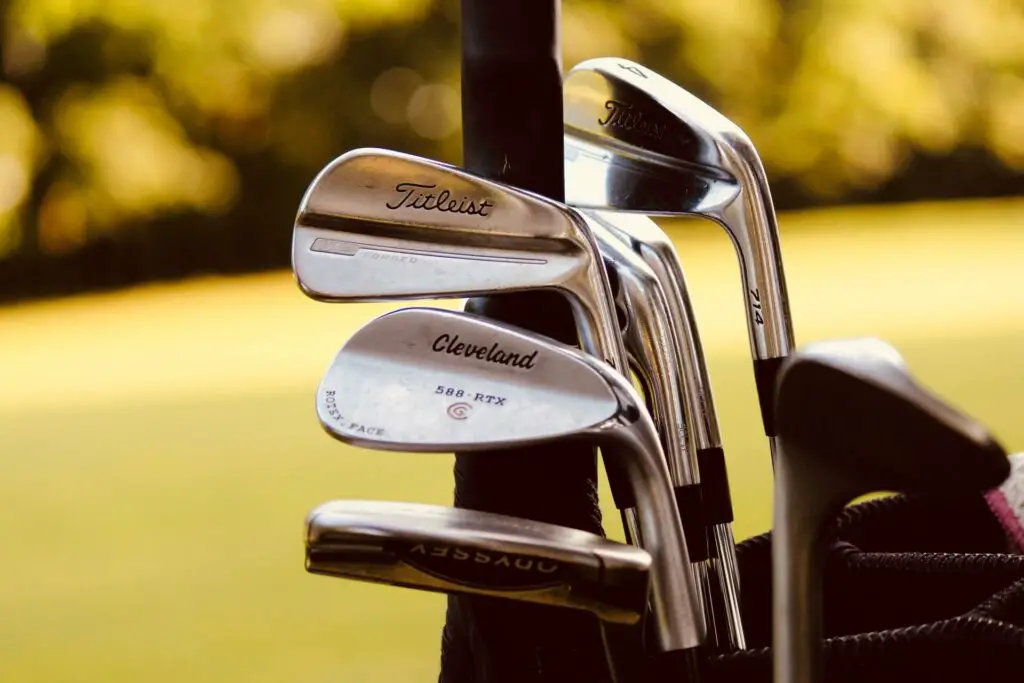Physical Address
304 North Cardinal St.
Dorchester Center, MA 02124
Physical Address
304 North Cardinal St.
Dorchester Center, MA 02124
As you progress as a player, you will play on different golf courses with all kinds of sand bunkers, and you will need to learn how to use various sand wedges in order to overcome such obstacles. Hence, it is important to ask – “What degree is a golf sand wedge?”.
Regular sand wedges are either 54 or 56 degrees (the more popular is the 56 degrees wedge). However, in some cases, other higher or lower-degree wedges can work for sand as well, even though they are technically meant for different kinds of shots. It mostly depends on how deep the sand bunker is and how far from the hole it is located.

The 54 and 56 sand wedges are standard golf clubs that every player has. These clubs are specially designed for sand bunkers since the angle at which the clubhead is tilted provides the most power and control when cutting through the sand. Of course, there are differences between 54 and 56 (elaborated on later in the text,) but there is no denying that these two golf clubs are used the most, both by players who are learning how to get out of sand traps and professionals who play in tournaments. When organizing your golf bag, be sure to include at least one of these two.
Before we get into more details about sand, let us first explain what golf wedges are in general. As you might know, golf courses consist of different types of obstacles (hazards in golfing terms) – sand bunkers or traps being one of them. In order to get the ball out of these areas or pass them, you need special golf clubs called wedges. Of course, if you are an absolute beginner, these golf clubs are not necessary, and new players first learn how to swing with standard ones. However, after the basics, the next step is to learn how to overcome obstacles. There are four different types of wedges:
Theoretically, you can use a regular golf club in order to learn the appropriate swing technique, but it is recommended to get a wedge, especially for sand, as regular clubs perform poorly in sand bunkers and traps.
The angle of 56 degrees is the angle between the clubface (the side of the club head with which the ball is hit) and the ground. The professional golfing term for this angle is “loft.” So, for a 56-degree sand wedge, we will say that its loft is 56. Now, we have to introduce another term, “bounce,” which is especially important for sand.
Bounce is the term used for how well a golf club cuts the ground underneath the ball during a swing. Sand wedges have a pretty acute angle (although there are club heads with more acute angles,) but also, their heads have the widest sole, and this combination is proven to provide the greatest amount of bounce. In other words, these clubs cut through the sand the most efficiently and, with appropriate technique, do not dig in at all, which is not the case with most other heads.
When you purchase a membership at a golf club, you will see that players frequently switch between 54 and 56 and sometimes even use other types of wedges, even though the ball is trapped in sand bunker. Let us see what different angles can provide to your game.
| 54 degrees | A 54-degree wedge is used when a sand bunker or trap is farther away from the green. It is also used for chip shots around the fairway and is especially good if the ground is wet. |
| 56 degrees | A 56-degree wedge is the standard golf club that almost every golfer possesses. You can pass long trajectories as well as use them for short chip shots around the fairway. Most importantly, a 56-degree clubhead is considered the best for players who have a problem with hitting behind the ball (these shots are characterized by extremely poor rotation, which mainly stems from the player’s inappropriate weight shift). |
| Other angles | You will often see more experienced players use different angles for getting the ball out of sand bunkers. However, these wedges are technically not considered sand anymore, but one of the other aforementioned types. The most popular ones are 60-degree wedges (they are used when sand bunkers are deeper than usual as more angle produces more bounce) and 58-degree (they are also used when bunkers are deeper than usual, but when they are closer to the hole). |
After you have learned all the basics, it is time to move on if you wish to advance as a golf player. Sand bunkers and traps are the most common obstacles (hazards) in golf courses, and it is necessary to know how to deal with them. But, in order to do so, you need the proper equipment. Hence, it is advisable to have at the beginning of your intermediate golf career the 56-degree wedge, as it is the most versatile one. Finally, remember – new golf clubs don’t make much difference, but rather, the ones that suit you the most, so be sure to try different materials and sizes before getting one.